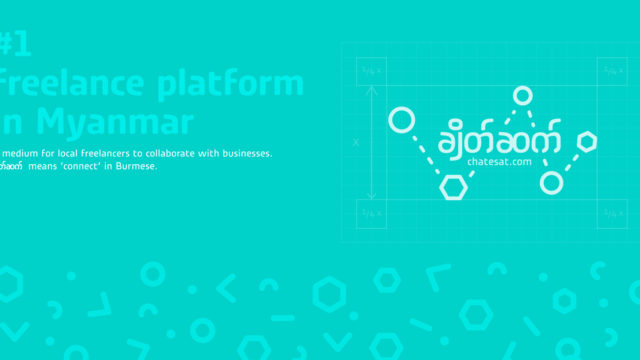We met Armand in his café in Taunggyi (near Inle) to discuss his different experiences in South East Asia, and particularly in Myanmar. Armand has been in the region for more than ten years now and in Myanmar for four years. He has therefore deeply immersed himself in the culture and history of the country which he has been able to tell us with passion.
How did you come to Asia and why?
“I first came to Thailand to invest in a pub and restaurant next to Pattaya. I teamed up with my brother, other French people on the project and some locals but they did not invest much of their time.”
How did your entrepreneurial adventure develop then?
“We then went on with these partners and opened a restaurant in Nyaung Shwe (near Inle Lake, a major tourist site in the country). From the beginning, our goal has always been Myanmar. After a few flourishing years, the geopolitical context became more complicated, so we tried to diversify.
What were your ideas to diversify?
“My brother Paul worked on a travel agency project. This agency offers motorbike tours around the lake (he just launched his “M-ride” project when we met Armand). I have settled in Taunggyi, just near Inle with my family. I opened a café there which serves as a laboratory for me to observe the tastes of the Burmese people. This idea came from the observation that many neighbours came to us regularly curious about the European way of life. With this laboratory we could see for example that offering a “French quiche” will not work, while an “Eggs and Ham Pie” is very successful because they know the words.”
Do you have any advice for a businessman coming to Burma?
“I think the important thing is to have the premises invested in your project. The Burmese, and Asians in general, can’t bear to lose face. So you mustn’t rush them, you mustn’t get angry. That’s why it’s easier to let a Burmese associate handle the front office with the other locals.”
What is the place of culture in the daily life of the country?
“Myanmar has about 130 official ethnic groups, each with its own traditions and language. The ruling ethnic group is the Burmese, from which the country took its name and official language until 2010. It is therefore very important to take into account the cultural specificities of the ethnic groups we work with. For example, a few kilometres from here at Inle Lake, the majority of the people living there are the Inthas. Whereas here (in Taunggyi) the Shan live in the mountains, they don’t have the same way of life.
Moreover the Buddhist festivals hold a very important place in the life of the country. For example at the time of the water festival (before the monsoon, to celebrate the end of the dry period) are well-known. These festivites completly paralize the life of the country . It is important to know this so as not to make any mistakes.”
Is there a significant divide between the different regions?
“Already we can distinguish several regions/metropolises, including
- Rangoon is the economic capital and turned towards the outside world because of its location by the sea.
- Mandalay which is in my opinion the city with the greatest potential for the future. At the centre of gravity of Myanmar, Mandalay is the crossroads of the internal exchanges of a country in full explosion. Mandalay is also located on the trade route between China and India (silk road). The city benefits from the dynamism of these two global giants to assert itself as a metropolis essential to the economic development of the country.
- Naypyidaw is the economic capital, created from scratch by the government. It wanted to get out of the city of Rangoon, saturated by its activity.
- The northeast of Shan State is the region, where jade is exploited for trade with China. The region is ideally located along the border with China. Burma is the world’s leading producer of jade.
- The Western Rakhine State concentrates most of the gas deposit of the country. Burma also has offshore fields in the west of Chin state and in the Andaman Sea (south of Rangoon).
Then, as far as rural areas are concerned, the country operates with a very centralized power. This regularly implies tensions between one province (one ethnic group) and the Burmese government. Although it’s not as simple and not as general, it’s one of the reasons why armed groups form from time to time in the remotest areas to challenge the government.”
What can you tell us about the laws in Burma?
“First of all, you have to be aware that the laws in Burma constantly changes, and it’s easy to get lost in them, so you have to refer to the texts. Since 2013, as the country gradually opens up to the world, Aung San Suu Kyi has been working on a real overhaul of the legislative system in order to put an end to certain abuses that may have existed under the military regime. The system is not yet perfect, but it is nevertheless progressive. For example, when I wanted to open the café, I needed to provide as much evidence and money as I would to open a big hotel!”
“Then, it is also important to know that each neighbourhood has its referent, and that it is through him that every project passes. Depending on the person in charge, the project and its leader, a simple signature can take a few days or a few months.”
What changes did you notice with the arrival of Aung San Suu Kyi?
“First of all, let’s say that her coming to power was due to the stalemate in the military junta. Under pressure from the West, which wanted to see an improvement in democracy, the junta agreed to put Aung San Suu Kyi – daughter of the general hero of the struggle against colonialism – in power. Nevertheless, the military retained 25% of the parliament and control over some of the country’s key ministries. Before she arrived, there was institutionalized corruption, you knew who you had to go to and how much to pay. But since he came to power, and the end of this “institutionalized corruption”, the processes have become less clear. While some people quickly got used to the new processes, others found it harder to apply the new processes, because they had always worked with the junta.”
Do you have a book to recommend to learn more about Burmese history?
“A Burmese History by George Orwell tells us about his personal experience as an English civil servant working at the beginning of the 20th century. Through his experience described in this book, any Westerner can identify with it. It’s amazing how much of the Burmese life that Orwell described a hundred years ago is still relevant today.”
Conclusion:
Armand gave us a very general vision of Myanmar, its opportunities and its evolution since its opening to the world in 2013. Through his many entrepreneurial experiences, he and his brother have been able to bet on a new promising sector: tourism. Myanmar is a land full of opportunities. It is eager to modernize itself, particularly at the administrative level, to open up even more to the world.
If you want to learn more about the Inle Lake, you can read our article on it: https://rocketbike.org/en/inle-lake-authentic-jewel-of-myanmar/
And if you are interested by the travel agency of Paul, his brother, you can visit his website: https://www.m-ride-tours.com/








